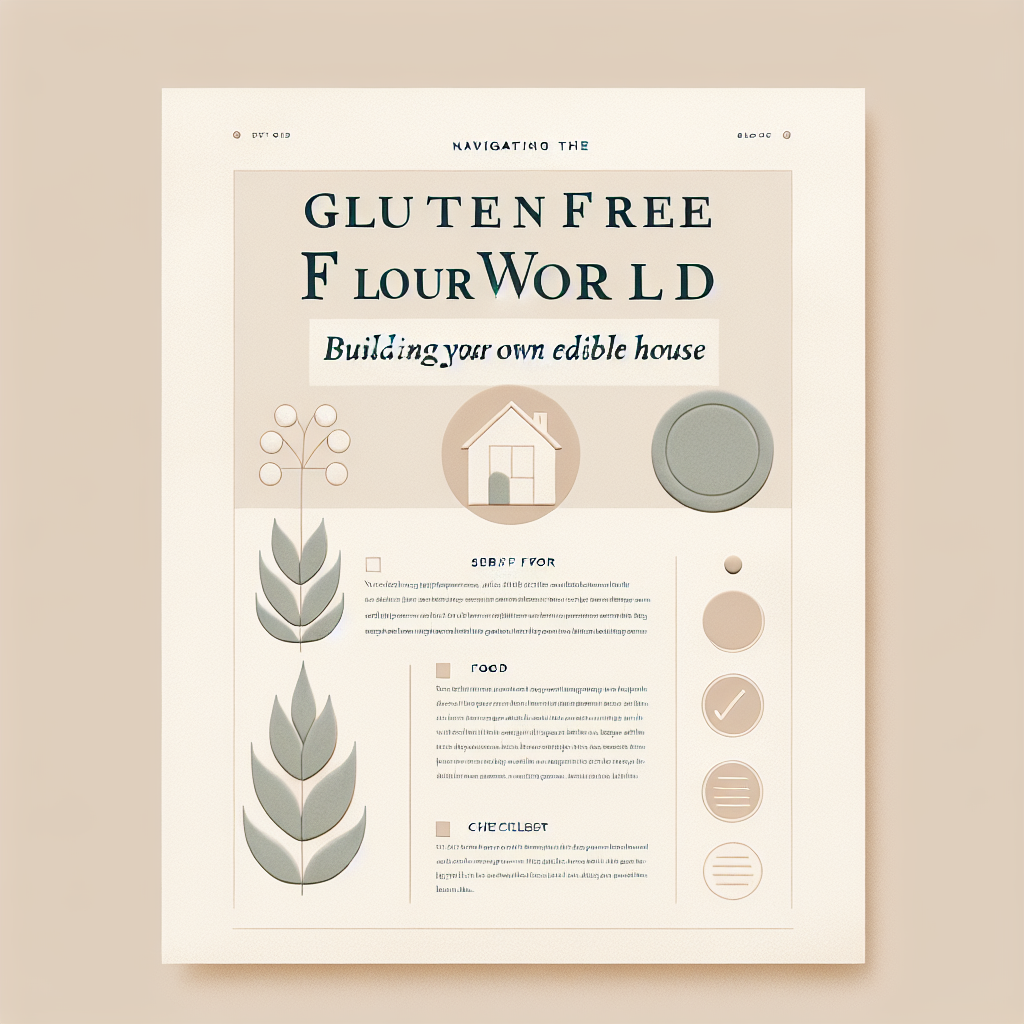Growing up, my treasured copy of the Brother’s Grimm fairy tales formed a cornerstone of my imagination. I remember reading each tale with wide-eyed wonder, but there was always one story that resonaiated with me deeper than all the others — Hansel and Gretel. Not just because of the clever siblings who outsmarted the wicked witch, but because I was fixated on the house made of bread and sugary delights, a dream realized for a little girl who loved carbs. Now, years later and living a gluten-free existence, I sometimes feel like Hansel and Gretel thrust into a wilderness of tricky wheat.
But, the world of gluten-free cooking and baking doesn’t have to be bleak. Today, I want to open your eyes to a way to create your own ‘edible house’ of dreamy gluten-free goodies by telling you about navigating gluten-free flours.
Let’s start by debunking a common misconception. Gluten-free flour can’t be substituted cup-for-cup for regular wheat flour in a traditional recipe — no ifs and buts. That being said, do not fret. With a little knowledge and experimentation, you can create equally tasty treats, if not better.
Enter the realm of gluten-free flour blends. A flour blend is a combination of multiple gluten-free flours utilized to mimic the texture and flavor of wheat flour. Part science and part culinary magic, creating great gluten-free flour blends is about understanding the properties of various gluten-free flours. I tackled the basics of the science in “[The Science Behind Gluten-Free Baking](blog_link)”post.
While ready-made gluten-free flour blends are available in most supermarkets, creating your own can be a fun and rewarding endeavor. Plus, it allows you to tailor the flavors to your personal preferences. Buckwheat for a dark and hearty loaf, white rice flour for your fluffy cupcakes, or something diverse like quinoa flour for a hint of earthiness? Truly, this world is your gluten-free oyster!
Before we move on, a vital disclaimer: you will not nail it on your first attempt. I certainly didn’t. My earliest attempts at making a gluten-free bread were, to be kind, less than satisfying. It looked like bread, but the texture was closer to sandstone. But remember, every master was once a disaster. Today, those same experiments have led me to create some of my favorite recipes like my infamous “[Gluten-Free Sourdough Bread](blog_link).”
Broadly, there are four types of gluten-free flours: High-Protein Flours, High-Starch Flours, All-Purpose Gluten-Free Flours, and Unique Gluten-Free Flours. Each type has specific characteristics that can texture and elevate the flavor of your gluten-free recipes.
High-Protein Flours, such as almond, coconut, and chickpea flour, are great for adding structure to your baked goods. These flours make chewy cookies and can mimic the springiness in bread that gluten typically provides. However, they do have a strong flavor profile and should be used sparingly to avoid overpowering your dish.
Next, we have the High-Starch Flours. Starchy flours, like arrowroot and tapioca, are the key to achieving a light and airy texture. These flours are also brilliant thickeners for soups and sauces. Be cautious when swapping these flours into your recipes since they can make your baked goods gummy if overused.
All-Purpose Gluten-Free Flours are exactly what they sound like — a pre-blended mix of gluten-free flours that are designed to replace regular flour in most recipes. These are fantastic for beginners, but sometimes cannot cater to specific flavor preferences.
Lastly, the Unique Gluten-Free Flour category. These flours like teff, sorghum, and quinoa flour are all about bringing unique flavors and textures to your creation. They are for the adventurous gluten-free cooks who are unafraid to experiment.
To conclude, the journey to your personalized gluten-free flour blend might be challenging, but it’s worthwhile. Arm yourself with a bit of patience and a sense of humor (you’re going to need it!). Our goal isn’t merely to substitute gluten but to find new flavors and textures that delight our tastebuds. With experimentation and knowledge, your bland and sandy gluten-free recipes can be transformed into a flavorful adventure.
And remember, though the story of Hansel and Gretel begins with a disheartening loss of breadcrumbs, it ends with triumphant joy (and the devouring of an edible house). Let’s see each gluten-free cooking failure not as a falling breadcrumb, but as a stepping stone leading to our victory over the wicked Gluten Witch.
Happy baking my gluten-free gourmands, and be prepared to relish your own delightful edible house of gluten-free wonders!
**Category: Educational Guides**


